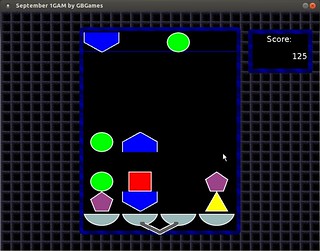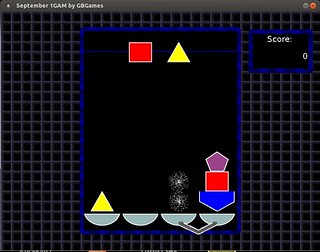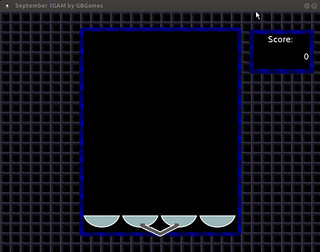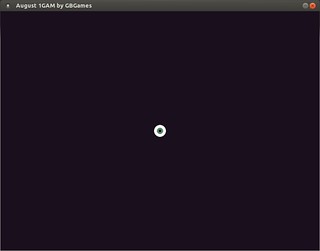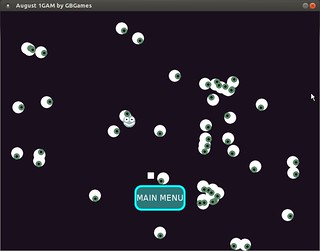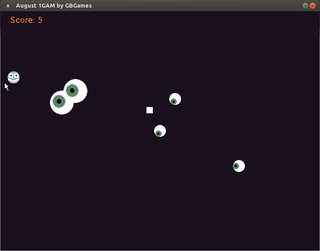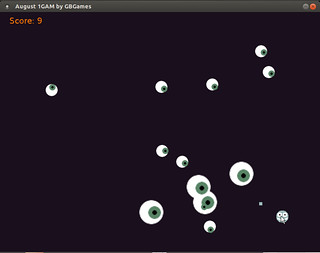My friend Gregg Seelhoff wrote a rant recently called You Lost Me at Buy.
He describes a dinner in which another person immediately rejected a game outright because it isn’t free to play.
We live in a world where there are a glut of freely available games, and a lot of them are high quality. It is perfectly within someone’s right as a customer to not be a customer, and businesses are not entitled to customers.
Still, it can be quite a shock to have someone immediately dismiss your game on the basis of the fact that they had to pay for it.
Now, I don’t completely agree with his first point, that games should not be free.
While most games make almost nothing in this new business model, it is kicking butt for some, and it is changing customer expectations in a disruptive way.
It’s painful for developers who expect to be able to sell games for a living, but if other developers are not only willing and able to release their games for free but also make a good living from it, that’s just a different business model.
It would be like saying that games should not be available through download because people should buy their games at retail through real stores. There’s an entire business model based upon selling at retail, with all of the partnerships and deals and overhead it required, and the Internet heavily disrupted that one well enough. I don’t think we’re going back to that world.
Still, years ago, casual portals and online retailers were lowering prices for games in a race to the bottom. It was a worrisome trend, and some of those portals are gone today, but what happened to customer expectations?
Is it healthy for the game industry for players to by and large expect their entertainment for free or nearly free? Maybe it is even healthier, as counterintuitive as it sounds.
Last year’s Penny Arcade Report by Ben Kuchera How Valve “devalued” video games, and why that’s great news for developers and players mentions how Valve and indie developers found their revenues increase dramatically when the per-unit price of their games was lower.
Ok, so developers can make more money, but does it impact the value players put on individual games?
Again, we live in a world where there are a glut of freely available games, and a lot of them are high quality. Sales and low prices aren’t necessarily devaluing games. It might just be the fact that players have a large backlog that they factor into their buying decisions.
Mike Ambrogi of Final Form Games says:
“[We] don’t believe sales are driving prices down; extant downward price pressure caused by a market surplus results in these sales becoming an optimal strategy.”
Selling games at a higher price point shouldn’t be dismissed as a stale view, though.
I think the bigger question is if there is room for games that can charge more. What are the real expectations for a game that costs $0.99 versus a game that costs $25.99? Are those latter games relegated to niche genres with fewer customers, or games which are more hobby than time-waster?
Is there still a unsustainable race to the bottom, or is the market being shook up, forcing out those who can’t make high quality entertainment with a low price point?
Since so many people can make games today, so many people are, and there are definitely a lot of mediocre games being made and published in the same space as the high quality ones. You can’t easily discern and find them, which is why app store top 10 lists are so huge for publicity, even if they aren’t a guarantee of success.
I’d like to think that people would be more willing to pay more for an epic-sized game rather than sit through ads or depend on big-spending whales to support their entertainment. The latter smacks too much of publishing a bunch of games in the hopes one becomes a hit and pays for the rest.
Finally, Seelhoff’s point that every interesting person plays games is spot on.
Just because a game does not involve a console and game controller, and shooting people on screen, does not make it any less of a game. Lots of people play Call of Duty, but ridiculous numbers of people also play Candy Crush. I do not like to segment people into hard-core/mid-core/casual/social/live/whatever gamers; they are all gamers. Please enjoy Pretty Good MahJongg and Demolish! Pairs, but do not tell me that you are not playing a game while doing so.
I can’t believe people still think “Oh, I don’t play games” just because they are not light zapper-holding 13-year-old boys who are into ninja turtles and M.C. Hammer. What year is this, seriously?
If you’re playing a solitaire game on your computer, you’re playing a game. The same goes for boardgames such as Monopoly and Scrabble. Words with Friends on your mobile device counts, too.
So by all means, play games. Why do people keep insisting to act as if there is shame in playing games?


